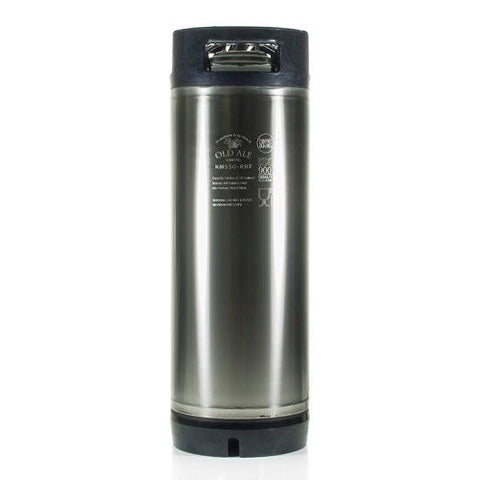October 30, 2023
Getting Started With Kegging
Kegging can seem intimidating at first, but it becomes easier with practice. You can keg beer, wine, mead, cider, soda or just plain drinking water. Simply transfer your beverage of choice to a clean, sanitized keg and hook it up to your system. Basically any beverage you want carbonated you can keg.
In addition, kegging allows for faster carbonation, less cleaning, and more control of your carbonation and dispensing. Essentially kegging is really as simple as Gas in, Liquid out, and balance.
If you are new to kegging, you can start with the basics in our How to Keg Beer blog or if you prefer more help, try one of our Northern Brewer University kegging courses:
And if you need a handy refresher, you can refer to our Guide to Kegging Terms
Kegs
Kegs come in all shapes and sizes and you’re not sure which is right for you? Some homebrewers have no preference between ball lock kegs vs. pin lock kegs - while for others it’s as much of a preference as Coke vs. Pepsi. Read our article on Ball Lock vs. Pin Lock kegs. Northern Brewer sells a variety of kegs ranging from mini-kegs to 5-gallon sizes.
 |
Kegging Systems
We also sell keg systems in a variety of sizes from 1 to 5 gallon systems. A mini-draft system is a perfect solution when there isn't room in the fridge for a full-size draft system. 1/2 gallon, 1 gallon, or 1.75 gallon kegs are the perfect way to make homebrew portable.
 |
Refrigeration & Storage
The first question you should ask with kegging is how to store and keep your kegs cold. There are a number of refrigeration options depending on the number and type of kegs you want to store or serve simultaneously. You can repupose a chest freezer, upright freezer, refrigerator, or even a small dorm fridge. One advantage of a refrigerator is it has builit-in temperature control. Freezers require an external temperature controller to keep your beer from freezing. Temp controllers are a simple device with a temperature probe to cycle the freezer on/off.
Gas Supply
Gas tanks are similar in concept to a propane tank used on a barrbecue grill. CO2 Cylinders commonly come in 5, 10, or 20-pound sizes and can either be exchanged for full tanks or refilled at a local gas supply company. Note: there are distinct cylinders and regulators used for 100% nitrogen or a blend of CO2 and Nitrogen called "Beer Gas."
- 5-pound tanks are more portable if you plan to take your kegs outside of your home. Also, if you have a leak in your system, a 5-pound tank is less waste and cost to refill.
- 10-pound tanks hold more CO2 so you don't have to refill or exchanged as often.
- 20-pound CO2 tanks are more economical, but are not as easy to transport as the smaller tanks.
You should be able to carbonate and serve at least 5 gallons of beer per pound of CO2. Doing some simple math, you'll find that a 20-pound tank should carbonate & serve at least twenty 5-gallon kegs before requiring a refill or exchange. Keep in mind the size of your space when selecting a cylinder size.
Gas Connections
You will need to connect your CO2 tank to your kegs with a regulator and tubing. With some additional equipment, you can easily send your gas to multiple kegs simultaneously using a manifold or splitter.
Regulators control the pressure coming out of your CO2 tank and into your kegs. You can dial in a higher PSI for carbonating more quickly, carbonate beers at different carbonation levels to style or taste, and ultimately, set your regulator at an appropriate level for dispensing your beer.
Manifolds. You can dispense multiple kegs at once with a Gas Distributor. This splits your gas supply into different lines to serve multiple beverages simultaneously.
Tubing & Connections: connecting your CO2 source, regulator and manifold requires additional tubing & hardware. It is important to check for leaks when building our your system; otherwise, you risk emptying your gas cylinder.
Liquid Dispensing
On the liquid side, you will also need Beverage Tubing and a faucet to dispense your beverage once it is carbonated to taste. You can choose a simple plastic "picnic" tap to a stainless steel or chrome faucets. Connect your faucet directly to your keg, or use a shank to pass-through a refridgerator or freezer.
Keep your bar, fridge or other beer dispensing area shiny and clean with a drip tray.
Don't forget about cleaning your draft system. Our complete line of cleaning equipment and chemicals will help ensure you never experience any off flavors attributable to a dirty draft line.
Kegerator or Keezer Building
A homemade kegerator or keezer can be one of the most satisfying projects for a homebrewer, next to making the beer itself. Not only is it easy to do, but you can design one that meets your individual needs and space requirements
Read our How to Build a Keezer blog or watch our How to Build a Keezer or Kegerator video.

Additional Kegging Resources:
- How to Choose the Right Keg Parts
- How to build a Kegerator
- How to Pour the Perfect Pint of Beer (Balancing Your Draft System)
- Kegging and Bottling Videos


